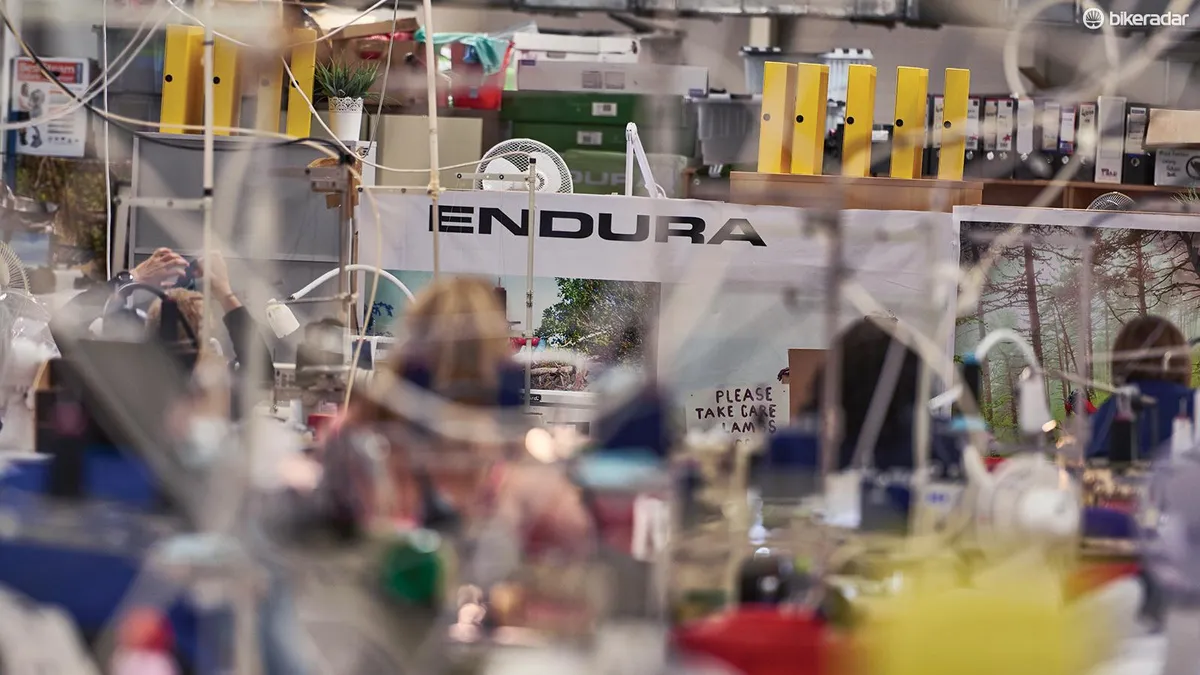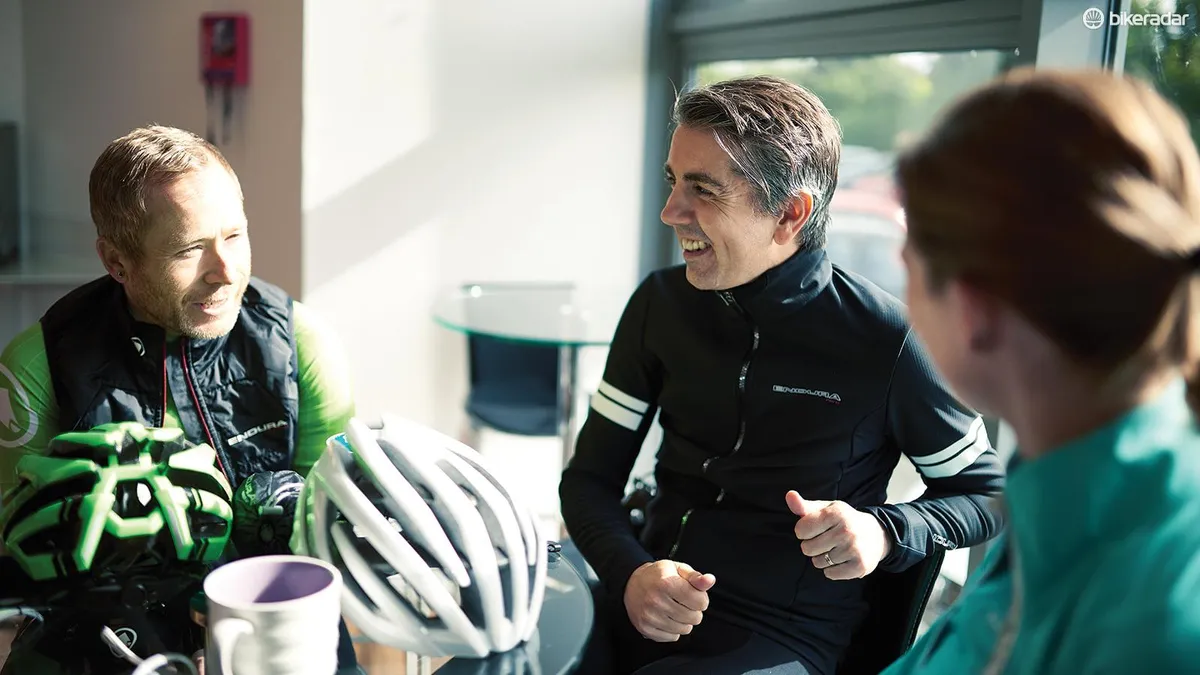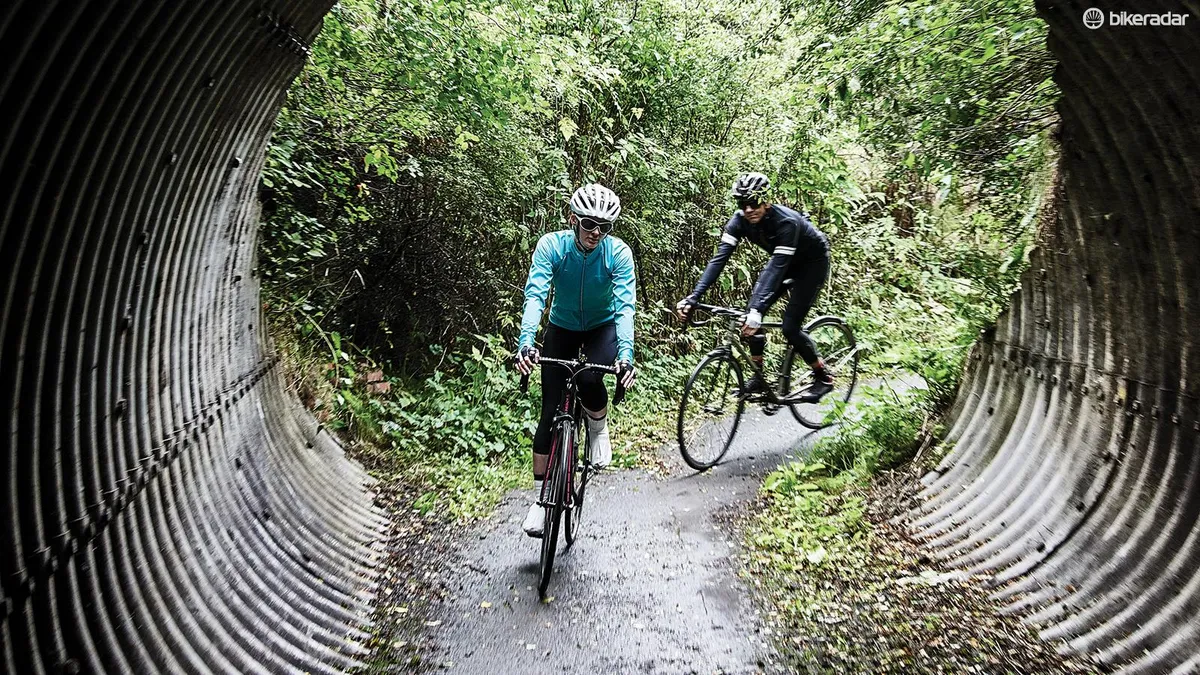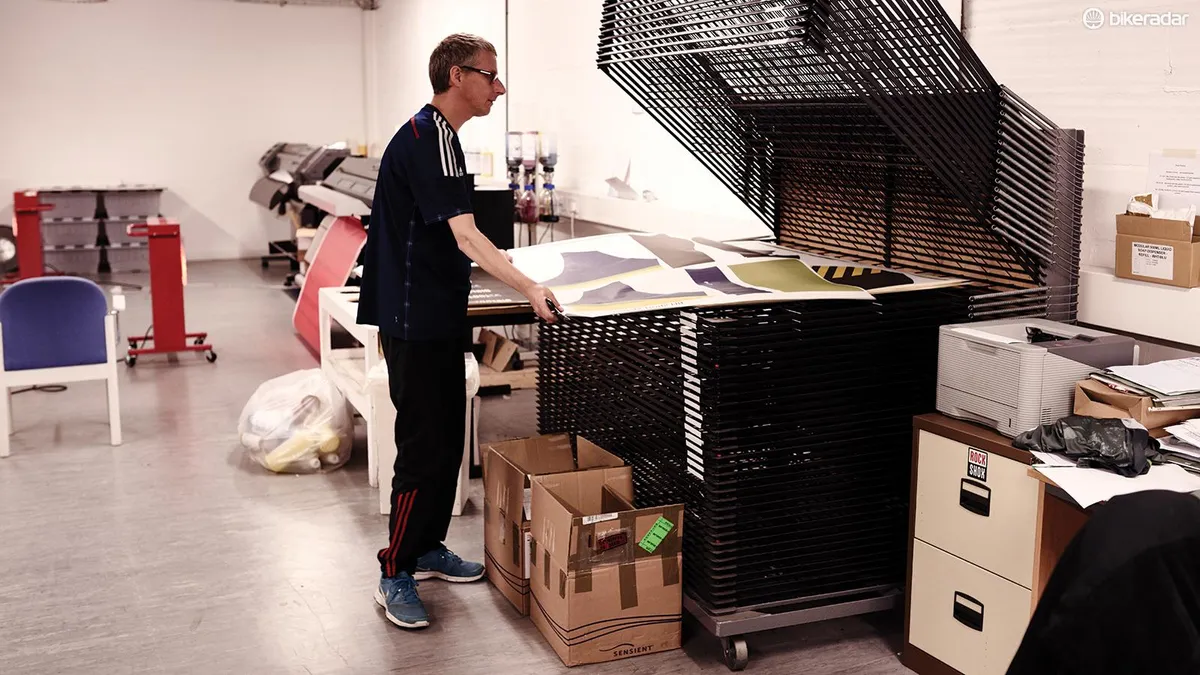Born of the Scottish mountain-biking scene, British clothing brand Endura is now kitting out roadies everywhere, including the WorldTour’s number one ranked pro team, Movistar. How did that happen?
It’s a long way from the mountain bike trails of the Highlands to the podiums of the Tour de France and Giro d’Italia, but when Movistar’s Nairo Quintana picked up the Giro’s pink jersey in 2015 he was dressed by a brand born in the backwaters of the 1990's British mountain biking scene.
If you aren’t progressing you aren’t learning so there has to be something new every year
And he’s not the only one: once the brand of choice for no-nonsense mountain bikers and commuters, Endura has become a go-to brand for roadies seeking pro-level performance at relatively sensible prices thanks to a drive for constant improvement and an on-site factory that ensures most new product is designed, manufactured and tested in the UK before anywhere else.
Founder and CEO Jim McFarlane remembers starting the company driven, as a cyclist, by a sense of disappointment: “It was disappointment at what you got for your money then when it came to cycle clothing and how poorly it held up. It seemed like few of the brands available in the early 1990s had much interest in technical merit or durability and were instead limited to fit and style without considering a garment’s functionality or lifespan.”
And that desire to be doing more than the competition in terms of functionality has been behind the evolution of the company ever since.
“We still sell a lot of the stuff the brand was built on,” explains brand manager Ian Young, “so mountain bike jackets, waterproof jackets, waterproof shorts, because we have a good reputation for that.
“But some time ago Jim started the process of focusing our high levels of functionality at all levels of rider — so that isn’t just kit that protects you from the weather, it has to perform for road cyclists who are riding hard for hours in hard conditions — be that the heat, the cold, the wet, whatever.”

McFarlane takes up the story again.
“It is nearly seven years since we started working with the [amateur] Pedal Power-Endura team. At that time we weren’t really thinking of WorldTour sponsorship but the aim was always to progress, and we said at the outset of that journey that if it became a case of doing the same thing every year we should stop.
Being able to develop and sample stuff here on site becomes more important the higher end you go
“If you aren’t progressing you aren’t learning so there has to be something new every year in order for it to be worthwhile for us. We followed that ‘progress or nothing’ approach and it led us to Movistar Team after progressing from Pedal Power-Endura through Endura Racing and Team NetApp-Endura. It was a consequence of us demanding that we progressed every year rather than a goal that was stated at the outset.”
And the input of the staff at those teams helps the wider brand progress at the same time.
“Working with the pro teams is great, and it helps the brand evolve,” says Young of Endura’s work with Movistar and the women’s team Cervélo-Bigla, “but there’s no point doing it unless you can bring that technology to market and make it available to the public, so that’s what we’re doing.”
To that end, maintaining the company’s manufacturing base in Livingston, on the outskirts of Edinburgh, is vital.
“It is important to us that we make kit in Britain, and the main importance is the understanding we get of the kit we’re making as it enables us to test everything. And if we’re creating new products then a lot of the physical development can be done here, rather than outsourcing to China and waiting three weeks for samples.
“Being able to develop and sample stuff here on site becomes more important the higher end you go,” he adds.
On the road

We sampled the local testing conditions on a ride out in the West Lothian countryside with employees Brendan Milliken and Sara Hill, whose commutes are ideal for trying kit. Although the murky day clears up for us, Milliken says this isn’t always the case.
Kitting out the world’s number one professional cycling team helps the business grow, and not only in the directions you might expect
“I’ve been at Endura for six years and I ride in every day — about 15 miles if I go direct, but normally I don’t — and I’ll do that all-year round,” says Milliken. “As long as I can physically get in I’ll ride, if it’s snowing I’ll use the main roads.”
Is the kit to be tested always appropriate to the conditions?
“Last winter we started doing a triathlon kit for the Ironman, and I was testing the bonded seams on that in December — so it was a hot-weather skinsuit tested in the freezing cold. I wore something over the top in case the glue failed, but it must have looked interesting to see me riding home in that during winter.
“I get the opposite too, because we test kit before each season arrives, so winter kit has to be tried out in summer. I’ll be given a waterproof jacket in summer, which is a good test of its breathability but not so much how it fares in the rain.
“That said, the weather around here does make it a good testing ground. I can climb to about 600m on my way in so the conditions and temperature can be very different from when I left. The weather here is very changeable too, which is typical of Britain, so it’s important that kit works in different conditions. And I always ride with a waterproof jacket in my bag!”
A perfect fit

Milliken also has one other advantage as a tester.
“I’m the same height as Nairo Quintana,” he says, “so when we started doing Movistar’s kit I would fit-test a lot of the kit for him, like his skinsuit and the pink kit we made for him when he won the Giro. And I wasn’t testing a black sample of that kit, it was full pink. I’ll also test the shorts to make sure we’ve got the cut right, especially if he’s asked for extra length on them. I’ll also test the leader’s kit for the other races should it be needed, so somewhere there is a full yellow Movistar set of shorts, socks, mitts etc…”
Kitting out the world’s number one professional cycling team helps the business grow, and not only in the directions you might expect. If your club sources its kit from Endura, for example, then you may not realise it but you are potentially buying genuine WorldTour-level kit, made in Scotland.
“One of the main gains we get from producing the Movistar kit in house is that the club kit we make has moved on massively,” explains Young as he shows us around a factory busy producing made-to-order kit for some lucky club riders. “Our WT range is very similar to the Movistar kit with fitted Lycra sleeves and side panels, and similar fabrics. Clubs are definitely shifting to this style of kit.

“And club kit is still an important part of our business, if you go to a sportive now you’ll see maybe half the kits are club kits.
“There’s more awareness of pro-level kit these days as well. Where a traditional club rider just wanted functional kit, there’s been a big shift and everybody wants to look the part — plus everybody knows about the advances that have been made, and the availability of that kit, so the expectation is there from club riders now.”
What about women's apparel?
“The demands are different, and there isn’t the choice on offer to women that there is to men,” says Ian Young. “So if women are seeing that the kit on offer doesn’t go up to as high a level as they’d like, then the first question is why.
“With that in mind our first focus is on making sure we offer our full range of kit to female riders, again working with pros on the female side through Cervélo-Bigla to get their feedback. We want to offer exactly the same features and spec as we do on the men’s side.
“Every women’s garment is designed as a women’s garment — it’s never just a men’s jersey with different side panels and a flower on somewhere.”
Export strength

Having the world’s leading pro team racing worldwide in your kit can only help with overseas recognition for the brand as well.
“Cycling in Britain has obviously grown enormously over the time Endura has been active,” says Young, “but we realise this can’t be sustainable forever and so have recognised the need to invest in exports.
“As of 2015 we started selling more on export than within our own territory, which is a nice split for us and I don’t think there’s any other UK clothing brand doing that in the way Endura has. Rapha sells a lot overseas but it is a direct sales brand whereas we go through retailers.”
This is an approach that is key to the way Endura does business.
“It’s important to us to sell through bricks-and-mortar shops,” says Young, “because that’s where we’ve grown over the years. Of course we work with online retailers as well, because consumers expect a choice of outlets and there are benefits to both routes.

“We see things looking positive for shops at the moment, because bike fits and the buying of high-end bikes should be done through them and the most forward-thinking retailers are doing a good job of that and we want to be working with them and make sure they are selling our kit.
I think the business is perhaps more international than we had ever considered it would be
“Our Pro SL short (both men’s and women’s) comes with the option of three different pad widths, but to sell that you need an understanding of what works best for different riders and different saddle widths. If you’ve fitted someone to a saddle, then you’ll know what pad works best with it. It’s a level of expertise between manufacturer and consumer.
“We also get useful feedback from shops, so it’s mutually beneficial, and we can take on board the best of it.”
Going back to that increase in exports, is there more stock being put by the rest of the world in British design since the nation’s emergence as a cycling power?
“I think there is more kudos involved in being a British brand now Britain has a more prominent place in the cycling world, but we never wanted to overplay being a British or Scottish brand. Yet our overseas sales people keep telling us how cool being Scottish is seen to be. As Scots we tend to play it down, but in the US it’s seen as one of the coolest countries in the world, and they love the Scottish thing in Germany too.
“There is also the side to Scotland about dealing with a harsh environment and still getting out on our bikes that gets respect.”
Endura then and now
Looking back over 23 years of the brand, is it now where McFarlane imagined it might be?
“There wasn’t a plan back then, or if there was it was just to see what could be accomplished in cycle apparel, so I can’t make a comparison between where we are now and what was envisaged back in 1992. I think the business is perhaps more international than we had ever considered it would be, and the level of R&D and intensive product development is beyond what I ever imagined.”
And so finally, is there already a plan for the next 20 years?
“It’s similar to what happened over the last 20 years and the path through from Pedal Power-Endura to Movistar Team in that we don’t have a final end point in mind but we have a clear vision of making progress every month and every year.
“We have high ambitions with technical innovation and our high levels of investment in this area — both financially and with company culture — reflect this, so where we find ourselves in another 20 years will be a reflection of that ethos.”






